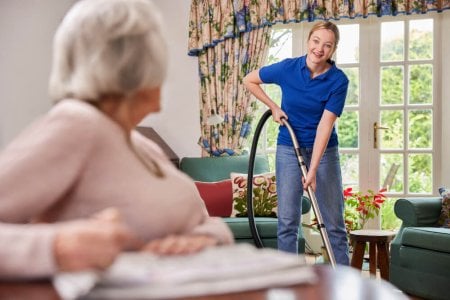2025 marks the biggest aged care reforms in almost 30 years — by Noel Whittaker
- Replies 28
Noel Whittaker is the author of Wills, Death & Taxes Made Simple and numerous other books on personal finance. Email: [email protected]
Next year, the biggest aged care reforms in almost 30 years will begin. These 'once in a generation' changes will redefine aged care and who pays for it. The fundamental change is that the government will fund clinical care for everyone, regardless of means, but older Australians will pay more towards other services.
Clinical care means those services provided by a nurse or therapist; independence services include help with such things as taking medications, showering and dressing; and everyday living services cover tasks like shopping, gardening and preparing meals.
Aged Care Guru Rachel Lane tells me that, while many people think of aged care as being in nursing homes, most services are actually delivered at home; of the $5.6 billion reform package, around $4.3 billion will go to home care.
The new Support at Home program is capped at $78,000/year. It will fund all clinical care costs, and you will pay on a sliding scale towards the other services, based on your assets and income.
Case studies
- Jill, a full pensioner with $10,000 of assets, will pay $2,467 a year (the government will pay $37,107).
- Marco, a part-pensioner with a $65,000-a-year income and $200,000 in assets, will pay $11,464 a year (the government will pay $28,110).
- Robin, a self-funded retiree with a $100,000-a-year income and assets of $500,000, will pay $16,615 a year (the government will pay $22,959).
On 1 January 2025, the cap on refundable accommodation deposits (RADs) – that is, the maximum 'market price' a home can charge without government approval – for new residents will increase from $550,000 to $750,000.
From 1 July 2025, aged care homes will also charge an exit fee of 2% of your RAD per year, for up to 5 years. So if your RAD is $750,000 and you stay for 5 years, $75,000 will be deducted when you leave.
The reforms don’t change who is eligible for support with aged care accommodation costs: people with assets above $206,039 will need to pay the market price. So if most prices go up to $750,000, there will be a $500,000 gap between what people need to pay and what they can afford. It looks as though the future of aged care will be dominated by daily accommodation payments (DAPs).
When it comes to the cost of ongoing aged care services, the government will pay for clinical care. Everyone will pay the basic daily fee (BDF), set at 85% of the age pension. Beyond this you will pay a hotelling supplement to cover services such as cleaning and laundry, a non-clinical care contribution based on your assets and income, and a higher everyday living fee if you choose to get 'extras'.
There is no change to the means testing of the family home: it is included up to a capped value of $206,039 unless a protected person lives there, in which case is exempt.
A 'no worse off' principle will protect those already receiving aged care, or eligible for a home care package but waiting for it to be delivered. This means that your costs will be the same – or less – after the reforms. If you move from home care to an aged care home after 1 July 2025, the changes to accommodation payments will apply, but you will have the choice of staying on the existing contribution arrangements or moving to the new ones. If you are already living in an aged care home, or move in before 1 July 2025, your contributions will not change while you live there.
While the message has been that 'wealthy Australians will pay more for aged care,' the government estimates that 3 in 10 full pensioners and 3 in 4 part pensioners will pay more, and it’s easy to see why. It seems that most Australians will pay more – in some cases, much more.
Advice given in this article is general in nature and is not intended to influence readers’ decisions about investing or financial products. Always seek professional advice that takes into account your personal circumstances before making any financial decisions.









